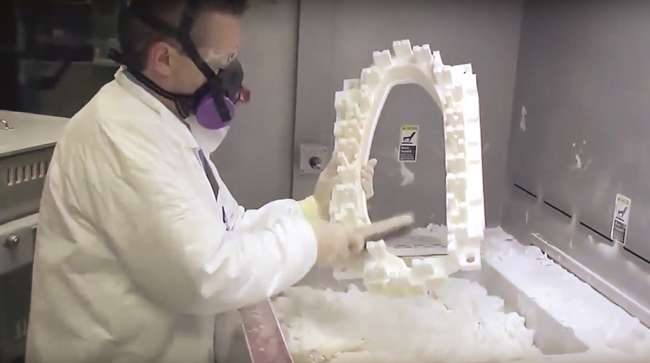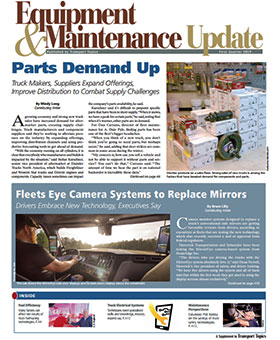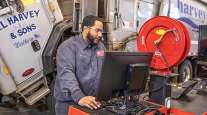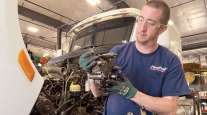Truck OEMs, Suppliers Look to Online Growth, 3D Printing

Equipment and component manufacturers in the trucking industry are looking to expand their online presence and also see potential in 3D printing, both of which could help them reach more customers, they said.
Daimler Trucks North America is expanding alliancetruckparts.com, its e-commerce platform, and has seen an increase in customers using pinnacletruckparts.com, its dealer-sponsored e-commerce solution.
Ultimately, customers will decide how they communicate with the company, said Stefan Kurschner, DTNA’s senior vice president of aftermarket.

Michael Lynch, director of supply chain operations for Navistar, said the truck maker is developing an e-commerce service that will be used among dealers and their customers. It will be released in 2019.
Dana Inc. has seen a growing trend toward online purchases from 2017 to 2018 among its distribution network.
Osvaldo Gallegos, the company’s senior director of commercial vehicle and aftermarket strategy and product planning, said he expects that will continue as the need for immediate access to information and replacement parts continues to increase.
Doug Dole, general manager of product strategy for Meritor, said the company has experienced a roughly 50% increase in activity on its e-commerce platform, meritorpartsxpress.com, between December 2017 and December 2018.
Eaton also is working on its online capabilities.
“As the future generations enter the workforce, more and more will be done online,” said Tim Bauer, vice president of aftermarket for Eaton’s vehicle group.
Technology also is leading to new solutions for parts demand, industry representatives said.
Josef Kory, Navistar’s senior vice president of parts, said Navistar is experimenting with 3D printing.
“The parts that will probably lend themselves well to 3D printing are the low-volume, end-of-life parts where tooling doesn’t exist and you wouldn’t want to [invest in new tooling for] a supplier,” he said.
There is always a need for parts for older trucks, and new technology could help keep those older trucks running, Kurschner said. Daimler Trucks is field testing 3D printing, which could ensure parts availability regardless of how old a truck is.
Richard Beyer, vice president of engineering and research and development at Bendix Commercial Vehicle Systems, said 3D printing can shorten the development phase of parts, but he does not see a near-term solution for production parts being produced directly by the process.
Dole said Meritor is leveraging 3D printing technology and plans to use it in the aftermarket for older and low-volume parts.




